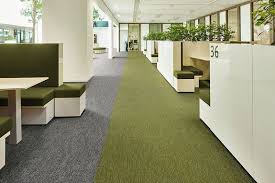Textile flooring includes carpets, rugs, and luxury vinyl tiles that provide various advantages such as comfort, durability, and aesthetics. They are widely used in residential as well as commercial settings like offices, hotels, hospitals, airports, and others where foot traffic is moderate to heavy.
The global Textile Flooring Market is estimated to be valued at US$ 184.29 Bn in 2023 and is expected to exhibit a CAGR of 6.1% over the forecast period 2023 to 2030, as highlighted in a new report published by Coherent Market Insights.
Market key trends:
One of the key trends in the textile flooring market is the increasing demand for eco-friendly flooring products. Various manufacturers are focusing on developing flooring options made from sustainable materials to cater to the rising environmental concerns of consumers. For instance, Interface Inc. offers carbon neutral modular tiles made from recyclable materials that can be reused or recycled at the end of their useful life. Similarly, Mohawk Industries provides carpet tiles made from recycled materials that have high recycled content.
SWOT Analysis
Strength: Textile flooring has various advantages compared to traditional flooring materials like wood, tiles, etc. It is durable, easy to install, comfortable and looks premium.
Weakness: Textile flooring has higher initial costs compared to other flooring options. It also requires regular vacuuming to remove dirt.
Opportunity: Growing construction industry and real estate sector is driving the demand for premium and aesthetically appealing flooring solutions. Rapid urbanization is also creating new construction opportunities.
Threats: Fluctuation in raw material prices can increase the overall costs. Strict environmental regulations related to disposal of textile flooring post usage can also constrain the market growth.
Key Takeaways
The global textile flooring market is expected to witness high growth, exhibiting CAGR of 6.1% over the forecast period, due to increasing demand for eco-friendly and luxury flooring solutions in both residential and commercial sectors. Rapid growth in infrastructure and construction activities is further fueling the market growth.
North America is expected to dominate the global textile flooring market during the forecast period. Favorable construction outlook along with rising home improvement and renovation activities in the US and Canada is supporting the regional market. Europe is also estimated to account for a significant share in the global market due to increasing spending on interior designing in countries like Germany, France, UK, etc.
Key players operating in the textile flooring market are Mohawk Industries, Inc., Interface, Inc., Beaulieu International Group N.V, Tarkett SA, Balta Group, Shaw Industries Group Inc., Forbo Holding AG, Mannington Mills, Inc., J+J Flooring Group, and Vorwerk and Co. KG. Major players are focusing on new product launches, mergers, acquisitions and geographical expansion strategies to gain competitive edge in the market.

